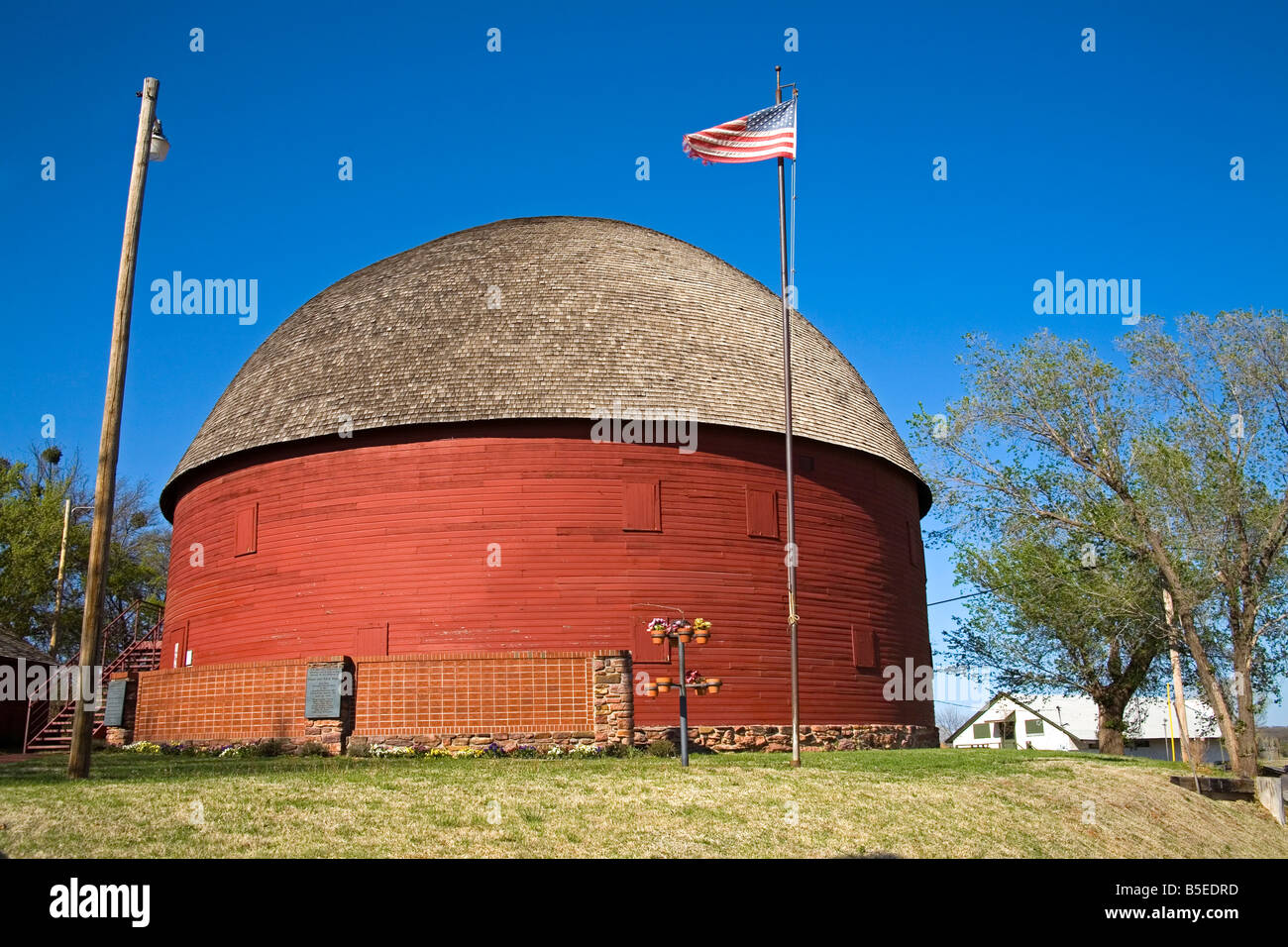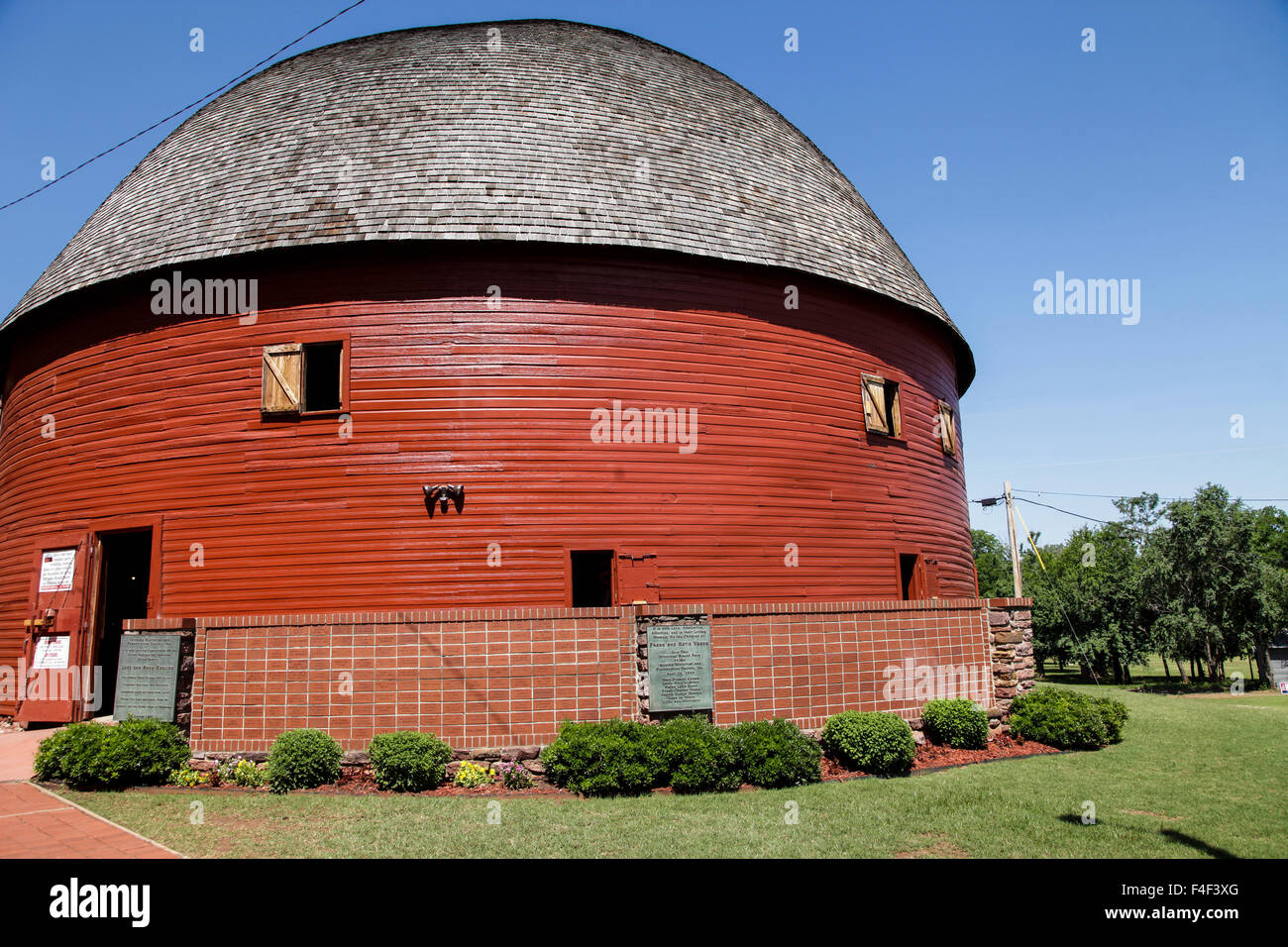
Arcadia, Oklahoma: Where the Mother Road’s Heart Still Beats
Dust motes dance in the golden light filtering through the ancient windows of a perfectly round barn, illuminating the whispers of a century. Outside, the steady hum of traffic on a legendary highway – U.S. Route 66 – serves as a timeless soundtrack. This is Arcadia, Oklahoma, a blink-and-you-miss-it dot on the map, yet a place that holds a disproportionate share of America’s nostalgic heart. More than just a collection of historic buildings and a storied road, Arcadia is a testament to resilience, community spirit, and the enduring power of places that refuse to be forgotten.
Nestled about 20 miles northeast of Oklahoma City, Arcadia is a small town with a population hovering around 250 souls, but its impact extends far beyond its modest census figures. It’s a mandatory pilgrimage for Route 66 enthusiasts, a beloved landmark for Oklahomans, and a quiet sentinel guarding the stories of the past. Its identity is inextricably linked to two monumental symbols: the iconic Round Barn and the legendary "Mother Road" itself.
The Round Barn: A Testament to Ingenuity and Community Spirit

The crown jewel of Arcadia is undoubtedly its magnificent Round Barn, a structure so unique it defies easy categorization. Built in 1898 by local farmer William Harrison Odor, this architectural marvel stands 60 feet in diameter and two stories tall, crafted entirely from native burr oak. Odor, a shrewd innovator, chose the circular design for its wind resistance – a crucial consideration in tornado-prone Oklahoma – and for its efficient use of space, allowing animals to be fed from a central hay chute. The second floor, accessible by a ramp, served as a community dance hall, hosting lively social gatherings that echoed with music and laughter for decades.
"It’s more than just a barn; it’s a piece of living history," explains Linda Hamm, a long-time Arcadia resident and one of the driving forces behind its preservation. "You can almost hear the fiddles playing and the stomping of feet when you walk through it."
Indeed, the barn’s life wasn’t always so vibrant. By the 1970s, it had fallen into severe disrepair, its roof caved in, its timbers rotting, a skeletal ruin that seemed destined to crumble into dust. But the people of Arcadia, led by the indefatigable efforts of Harley and Linda Hamm and a grassroots organization called "The Friends of the Round Barn," refused to let their beloved landmark disappear.
Starting in 1988, with no public funding and relying solely on donations and volunteer labor, the community embarked on an extraordinary restoration project. Harley Hamm, a retired carpenter, spearheaded the effort, meticulously rebuilding the structure plank by plank, often using tools and techniques from the original era. Volunteers from all walks of life – farmers, teachers, students, retirees – dedicated thousands of hours, driven by a shared love for their heritage. They hoisted timbers, pounded nails, and scraped away decades of decay, breathing new life into the old barn.
The restoration was a Herculean task, taking years to complete, but their dedication paid off. By 1992, the Round Barn stood tall and proud once more, its distinctive silhouette gracing the Oklahoma landscape. Today, it operates as a museum and a gift shop, welcoming thousands of visitors annually. It hosts community events, art shows, and even the occasional wedding, fulfilling its original purpose as a community gathering place. Its upper level still serves as a venue, albeit a quieter one, where visitors can admire the intricate craftsmanship and imagine the joyous dances of yesteryear. The Round Barn isn’t just a building; it’s a powerful symbol of community resilience, a testament to what a small town can achieve when united by a common purpose.
Route 66: The Artery of American Dreams
Running directly through the heart of Arcadia is U.S. Route 66, the legendary highway that once stretched from Chicago to Los Angeles. Established in 1926, the "Mother Road" became the symbolic ribbon of the American Dream, a pathway for migrants fleeing the Dust Bowl, for families seeking adventure, and for soldiers returning home after World War II. Arcadia, like many small towns along its path, thrived on the traffic it brought. Motels, diners, and gas stations sprang up to cater to the endless stream of travelers, turning the highway into the town’s lifeblood.
"Route 66 isn’t just a road; it’s a feeling," muses a long-haul trucker, pulling over for a photo op near the Round Barn. "Every mile tells a story. And places like Arcadia, they’re the chapters you don’t want to skip."

The advent of the Interstate Highway System in the 1950s and 60s dealt a severe blow to these roadside communities. Interstate 44, running parallel to Route 66, diverted traffic away, leading to the decline and eventual decommissioning of much of the old highway in 1985. Arcadia, like many of its sister towns, felt the sting of economic stagnation. Yet, unlike some, it refused to fade entirely.
In recent decades, a powerful wave of nostalgia has breathed new life into Route 66. Travelers from across the globe, seeking an authentic slice of Americana, now purposefully detour onto the historic segments. They come to experience the open road, the kitsch, and the genuine hospitality that defined the journey for generations past. Arcadia, with its meticulously preserved Round Barn and its steadfast commitment to its Route 66 heritage, has become a quintessential stop on this nostalgic pilgrimage.
POPS: A Modern Icon on a Historic Road
While the Round Barn anchors Arcadia firmly in the past, a vibrant, modern landmark just down the road ensures the town remains relevant and exciting for contemporary travelers. POPS, a futuristic-looking gas station, restaurant, and soda ranch, opened in 2007 and has quickly become a Route 66 icon in its own right. Its most striking feature is a colossal, 66-foot-tall soda bottle sculpture, crafted from thousands of LED lights, which glows with shifting colors against the Oklahoma night sky – a beacon for travelers and a brilliant piece of roadside art.
Inside, POPS boasts an astounding selection of over 700 varieties of soda from around the world, arranged in a dazzling, colorful display that stretches along its walls. From obscure craft sodas to nostalgic favorites, it’s a candy store for the carbonated drink connoisseur. Its diner-style menu offers classic American comfort food, making it a perfect refuelling stop for hungry travelers.
"POPS really put Arcadia back on the map for a lot of people," says a young couple from Germany, excitedly snapping photos of the giant bottle. "It’s so unexpected, so modern, right here on the old road. It’s a perfect blend of past and present."
POPS represents the evolving spirit of Route 66: not just a road of faded glory, but a dynamic artery that continues to innovate and attract new generations of adventurers. It’s a testament to the idea that even a historic route can embrace the contemporary without losing its soul.
Life in Arcadia: Beyond the Tourists
Beyond the iconic landmarks and the steady stream of tourists, Arcadia remains a small, tight-knit community. Its residents embody the quiet resilience and friendly demeanor often associated with rural Oklahoma. Life here moves at a slower pace, dictated by the seasons and the rhythms of small-town living. There’s a shared sense of pride in their unique heritage and a collective effort to maintain the charm that draws visitors from far and wide.
"We might be small, but our heart is big, and our history runs deep," states a long-time resident, enjoying a quiet afternoon on his porch. "We’ve seen a lot of changes over the years, but the spirit of Arcadia, that hasn’t changed. We know who we are."
The town faces the ongoing challenge of balancing the demands of tourism with the desire to maintain its peaceful, residential character. Yet, the economic benefits brought by the visitors and the businesses like POPS are undeniable, providing jobs and sustaining the local economy. The preservation efforts around the Round Barn continue, with volunteers regularly tending to its upkeep, ensuring its legacy for future generations.
Arcadia is also home to a few other charming, though lesser-known, historical markers. The old Arcadia Historical Society building, once a blacksmith shop, houses local artifacts and stories. Antique shops and small businesses dot the highway, each adding to the town’s unique character.
In essence, Arcadia, Oklahoma, is more than just a convenient stop along Route 66. It is a living museum, a testament to the ingenuity of early settlers, the unwavering spirit of a community, and the enduring allure of America’s most famous highway. It’s a place where the past isn’t just remembered; it’s actively lived and meticulously preserved. As the sun sets over the vast Oklahoma plains, casting long shadows from the Round Barn and illuminating the dazzling lights of POPS, Arcadia stands as a quiet sentinel, a place where the heart of the Mother Road truly continues to beat, strong and true, inviting all who pass to pause, reflect, and perhaps, even dream a little.


